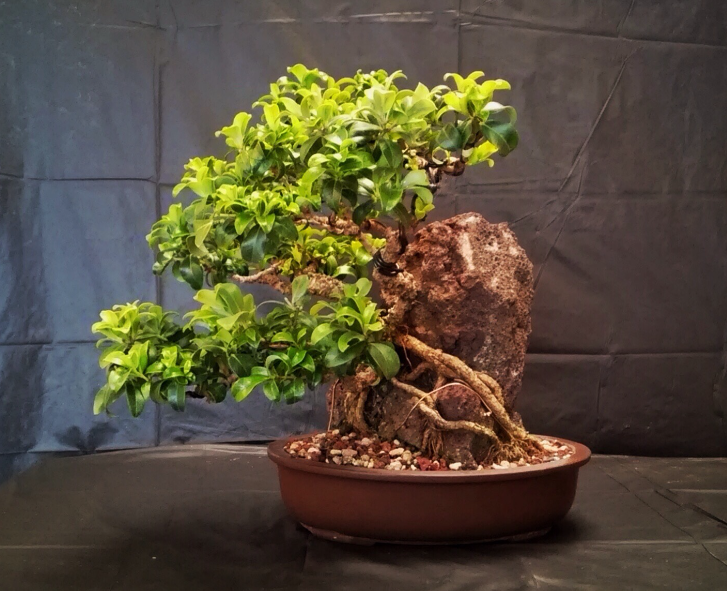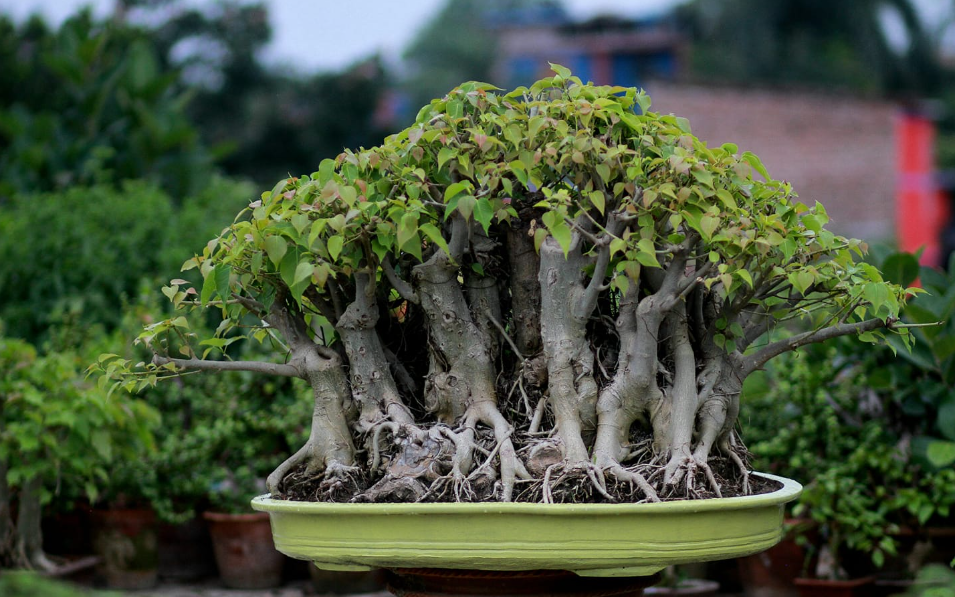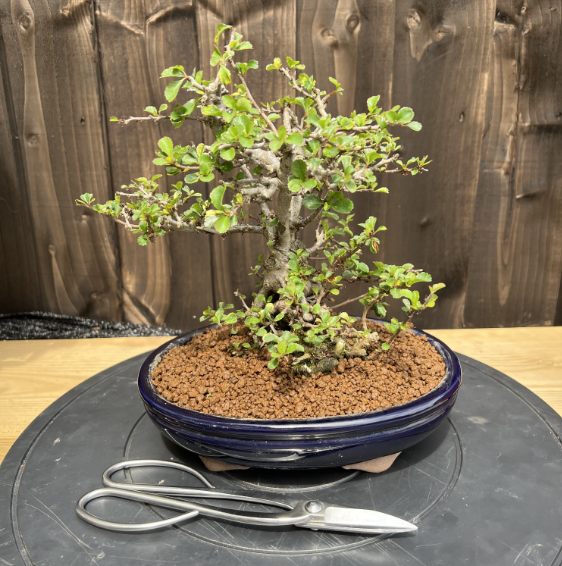Welcome to the enchanting world of bonsai, where the art of cultivating miniature trees takes on a delightful twist with the Bonsai Clump Style. This captivating technique, also known as Multi-trunk or Thicket-style bonsai, transforms individual trees into harmonious clusters, creating a bonsai forest that mimics the beauty of nature. In this journey through the clustered realms of bonsai, we’ll explore the definition, significance, and the irresistible appeal of Bonsai Clump Style.
Imagine a tiny forest in the palm of your hand – that’s the magic of Bonsai Clump Style. This approach involves planting multiple trees together, carefully arranged to mimic the aesthetic charm of a natural forest. These miniature groves, also known as Bonsai group plantings, showcase the collaborative artistry of nature and human hands. The significance of Bonsai Clump Style lies in its ability to create a captivating story within a confined space. It’s not just about cultivating trees; it’s about crafting a living, breathing ecosystem that captures the essence of a full-sized forest on a miniature scale. The appeal of this style is undeniable, drawing in bonsai enthusiasts with its unique visual impact and the creative challenge it presents. So, if you’re ready to embark on a journey of bonsai artistry that goes beyond the singular, let’s dive into the wonderful world of Bonsai Clump Style.

Understanding Bonsai Clump Style
Key Characteristics
At the heart of the Bonsai Clump Style are its key characteristics, which define its aesthetic appeal. This style often features multiple trunks emerging from a shared root system, creating a sense of unity and collaboration among the trees. The arrangement is carefully designed to mimic the randomness of trees in a forest, yet it follows a meticulous plan to achieve balance and visual harmony. Clustered bonsai designs not only celebrate the individuality of each tree but also emphasize the collective beauty that emerges when they grow together. The variety in trunk sizes, shapes, and heights adds a dynamic element, making each viewing a delightful exploration of diversity within unity.
Historical Context
The roots of Bonsai Clump Style can be traced back to ancient Chinese and Japanese gardening traditions. In these cultures, the representation of nature in miniature form has always held profound significance. The art of collective planting techniques evolved as a way to capture the essence of expansive landscapes within confined spaces. Bonsai Clump Style, with its roots deeply embedded in historical practices, brings forward the wisdom of generations, reminding us of the interconnectedness of all living things. As we delve into the rich history of this bonsai style, we find inspiration not only in its aesthetic appeal but also in the cultural narratives it carries forward.

Crafting Your Miniature Forest with Bonsai Clump Style
Selecting Suitable Bonsai Species
The first step in creating your own bonsai clump masterpiece is choosing the right tree species. While many trees can be adapted to clump-style arrangements, some are particularly well-suited for this purpose. Consider species that naturally grow in clusters or thickets in the wild, such as maples, elms, or junipers. The goal is to replicate the look and feel of a diverse forest, so incorporating a mix of deciduous and evergreen species can add visual interest throughout the seasons. Research each species’ growth habits, including their size, leaf shape, and preferred growing conditions, to ensure they can coexist harmoniously in your miniature forest.
Design Principles for Clump Style
Creating a visually stunning bonsai clump involves adhering to design principles that enhance the overall appeal of your miniature forest. Begin by selecting a primary focal point, perhaps a slightly taller or uniquely shaped tree that draws attention. Surround this focal point with complementary species, varying trunk thickness and height to mimic the randomness found in nature. Pay close attention to the negative space between trees, ensuring an open yet balanced composition. Think about the seasons and how each species contributes to the overall aesthetic throughout the year. By embracing these design principles, you’ll craft a bonsai clump that not only captures the essence of a real forest but also becomes a living work of art.

Techniques for Bonsai Clump Style Mastery
Pruning and Shaping
Pruning is the sculptor’s tool in the world of bonsai, and for a clump-style arrangement, it becomes even more crucial. Regular and thoughtful pruning is essential to maintain the balance and structure of your miniature forest. As each tree in the clump grows, selectively trim branches to create a harmonious silhouette. Focus on enhancing the natural appearance of the trees by avoiding overly symmetrical shapes. Shaping becomes an art form as you guide the growth of each trunk, creating a dynamic interplay of lines and spaces. By mastering the art of pruning and shaping, you’ll unleash the full potential of your bonsai clump, allowing it to evolve gracefully over time.
Root Development Strategies
The health and vitality of your bonsai clump depend on a well-developed and cooperative root system. Encourage root entwinement by planting the trees close together and allowing their roots to intermingle over time. Be mindful of the soil composition, ensuring it promotes healthy root growth and water retention. Periodically lift and inspect the clump to address any root congestion or imbalances. Root pruning can be employed strategically to maintain a compact and unified root system. By implementing effective root development strategies, you’ll establish a strong foundation for the long-term success of your bonsai clump.
Bonsai Clump Style Aesthetics
Creating Visual Harmony
The magic of Bonsai Clump Style lies in its ability to create a visually harmonious composition that reflects the balance found in nature. Achieving this harmony involves a keen eye for proportion and spacing. Pay attention to the arrangement of trunks and branches, ensuring that each element contributes to the overall balance of the clump. Vary the heights and angles of the trees to create depth and interest, and consider the seasonal changes in foliage to maintain a dynamic visual appeal. By embracing the principles of visual harmony, your bonsai clump will become a captivating tableau that captures the essence of a thriving, diverse forest.
Mimicking Natural Forests
One of the remarkable aspects of Bonsai Clump Style is its ability to replicate the intricate beauty of natural forests on a miniature scale. Embrace the randomness found in nature by avoiding overly structured or symmetrical arrangements. Mimic the irregular spacing and varied heights of trees in a forest, creating a sense of depth and authenticity. Use different species with diverse leaf shapes and colors to enhance the natural look of your miniature forest. Consider the changing seasons and adapt the foliage accordingly to mirror the ebb and flow of nature. As you master the art of mimicking natural forests, your bonsai clump will become a captivating snapshot of the great outdoors, inviting observers to marvel at the beauty of the wild encapsulated in a tiny landscape.

Tips for Successful Bonsai Clump Style
Soil and Pot Considerations
Choosing the right soil and pot is crucial for the success of your bonsai clump. Select a well-draining soil mix that provides adequate aeration for the roots. Since multiple trees share the same pot, a balanced nutrient supply is essential for their collective health. Consider using a shallow container to emphasize the miniature forest aesthetic and allow for better root management. Additionally, choose a pot that complements the overall design of your clump, enhancing the visual impact of the arrangement. The right soil and pot considerations lay the foundation for a thriving bonsai clump that not only looks spectacular but also sustains the health and vitality of each tree.
Proper Watering and Maintenance
Watering is a delicate dance in bonsai, and when it comes to clump-style arrangements, precision becomes even more critical. Water thoroughly, ensuring that each tree in the clump receives adequate hydration. Pay attention to individual water needs, considering factors such as tree species, soil composition, and weather conditions. Regularly check for signs of overwatering or underwatering, adjusting your watering schedule accordingly. Maintenance tasks, such as removing spent leaves, checking for pests, and occasional root pruning, contribute to the long-term health and beauty of your bonsai clump. By mastering the art of proper watering and maintenance, you’ll nurture a thriving miniature forest that continues to captivate and inspire.
Showcasing Bonsai Clump Style
Displaying Your Miniature Forest
Your bonsai clump is a living masterpiece, and displaying it effectively enhances its visual impact. Consider placing your miniature forest at eye level on a sturdy, aesthetically pleasing stand. This not only makes it easier for viewers to appreciate the intricate details but also adds a touch of grandeur to your display. Experiment with different angles to find the most captivating view, and consider incorporating accent elements such as rocks or moss to complement the naturalistic theme. Creating an engaging display space for your bonsai clump transforms it into a focal point that draws admirers into the enchanting world you’ve crafted.
Participating in Bonsai Exhibitions
Take your bonsai clump to the next level by participating in bonsai exhibitions. These events not only provide a platform to showcase your artistry but also offer opportunities to connect with fellow enthusiasts and learn from experienced bonsai practitioners. Prepare your clump meticulously before the exhibition, ensuring that it embodies the principles of Bonsai Clump Style. Pay attention to the overall health, aesthetics, and storytelling aspects of your miniature forest. Sharing your creation with a wider audience not only brings joy to others but also fosters a sense of community within the vibrant world of bonsai.
Troubleshooting and Common Challenges
Addressing Pest and Disease Issues
Even the most carefully tended bonsai clump may encounter pest and disease challenges. Regularly inspect your miniature forest for signs of pests, such as discolored leaves or unusual markings. Implement preventive measures, such as neem oil or insecticidal soap, to keep common pests at bay. In case of diseases, promptly isolate affected trees to prevent the spread and treat them with appropriate fungicides. Regularly cleaning the foliage, removing dead or infected parts, and maintaining a healthy environment contribute to the overall resilience of your bonsai clump. Being proactive in addressing pest and disease issues ensures the continued vitality and beauty of your miniature forest.

Dealing with Growth Imbalances
As your bonsai clump matures, you may encounter growth imbalances among the individual trees. Address these imbalances through strategic pruning and shaping. Focus on promoting equal growth among the trunks, adjusting the height and thickness of branches to maintain harmony. Periodically rotate the position of the trees within the clump to ensure that each receives adequate sunlight and air circulation. Additionally, consider repotting the clump every few years to refresh the soil and address any root congestion. By actively managing growth imbalances, you’ll sustain the cohesive beauty of your bonsai clump and ensure its long-term health.
Inspirational Bonsai Clump Style Designs
Showcasing Noteworthy Examples
Let’s draw inspiration from some remarkable Bonsai Clump Style designs that have captured the hearts of enthusiasts worldwide. The “Grove of Tranquility,” for instance, seamlessly combines deciduous and evergreen trees in a meticulously crafted composition. Each tree contributes to the overall balance, creating a sense of serenity that mirrors a tranquil forest setting. Another noteworthy example is the “Unity Ensemble,” where multiple trunks of the same species intertwine to form a cohesive and visually striking clump. These exemplary designs showcase the versatility of Bonsai Clump Style, illustrating the potential for creativity and expression within the confines of a miniature forest.
Encouraging Creativity in Design
As you embark on your journey with Bonsai Clump Style, don’t hesitate to infuse your own creativity into the design process. Experiment with unconventional combinations of tree species, explore unique pot shapes, or incorporate miniature accessories to tell a specific story. The “Whimsical Woodland” design might feature a mix of flowering and coniferous trees, creating a vibrant and whimsical atmosphere. By embracing your artistic instincts, you not only contribute to the diversity of Bonsai Clump Style but also add a personal touch that makes your miniature forest truly one-of-a-kind. Remember, there are no strict rules in bonsai; let your imagination flourish and watch your clump-style creation come to life in ways you hadn’t imagined.
Conclusion
In the enchanting realm of bonsai, the Bonsai Clump Style stands out as a unique and captivating approach to cultivating miniature forests. Defined by its key characteristics, rich historical context, and the principles of visual harmony, this style offers bonsai enthusiasts an exciting avenue for artistic expression. Crafting your miniature forest involves thoughtful selection of suitable tree species, adherence to design principles, and mastery of pruning and root development techniques. The aesthetics of Bonsai Clump Style, mimicking natural forests, create an immersive experience that mirrors the beauty of the great outdoors.
As you embark on this bonsai adventure, consider the tips for success, from soil and pot considerations to proper watering and maintenance. Showcasing your bonsai clump involves thoughtful display and, for the adventurous, participation in bonsai exhibitions. Troubleshooting common challenges, such as addressing pests and managing growth imbalances, ensures the long-term health and vibrancy of your creation.
Inspirational designs from the bonsai community showcase the boundless creativity that Bonsai Clump Style allows. By encouraging your unique vision and adding a personal touch to your clump-style arrangement, you contribute to the rich tapestry of bonsai artistry. So, as you explore the wonders of Bonsai Clump Style, remember that the journey is as delightful as the destination, and the beauty of your miniature forest is a testament to the harmony between nature and your artistic hands. Happy clumping! Thank you for visiting Hampton Grows, read our blogpost about bonsai with topic Amur Maple Bonsai Care: Expert Tips For Growing And Pruning.
FAQ
A: The choice of tree species plays a crucial role in Bonsai Clump Style. Consider species that naturally grow in clusters or thickets, such as maples, elms, or junipers. Combining deciduous and evergreen trees adds visual interest, and researching the growth habits of each species ensures a harmonious coexistence within your miniature forest.
A: Visual harmony in a Bonsai Clump Style is achieved by paying attention to proportion, spacing, and overall balance. Vary the heights and angles of the trunks to create depth, and avoid overly symmetrical arrangements. The key is to replicate the randomness found in nature while maintaining an aesthetically pleasing composition.
A: Regularly inspect your bonsai clump for signs of pests, such as discolored leaves or unusual markings. Implement preventive measures like neem oil or insecticidal soap to keep pests at bay. Isolate affected trees promptly to prevent the spread and treat them with suitable fungicides. Maintaining a clean and healthy environment, along with proactive monitoring, helps address and prevent pest issues.
A: Participating in bonsai exhibitions with a Bonsai Clump Style requires meticulous preparation. Ensure your clump embodies the principles of this style, emphasizing overall health, aesthetics, and storytelling. Display it on an eye-level stand, experiment with angles, and consider incorporating accent elements like rocks or moss. Engaging with the bonsai community, sharing your journey, and learning from experienced practitioners can also enhance your exhibition experience.






